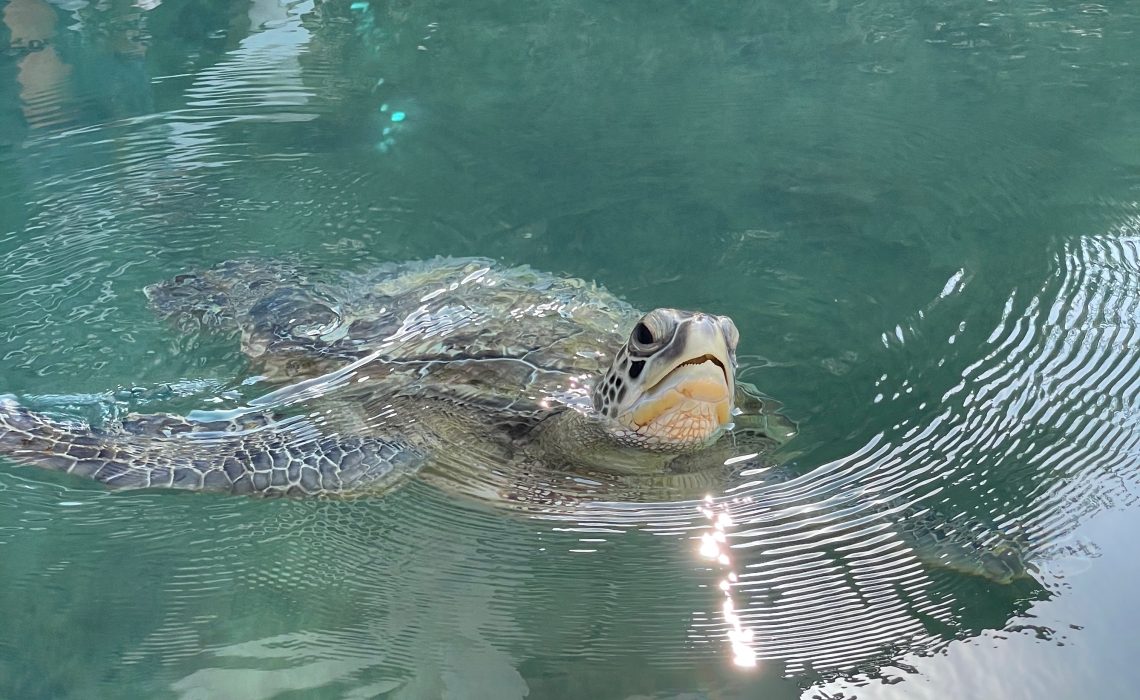
What’s the story here?
One that’s not obvious to guests staying at the Burj Al Arab.
My turtle discovery journey started right outside the Jumeirah Al Naseem, where several ‘recovery’ lagoons are located and you can participate in daily turtle feeding (not during the very hot summer months, they tuck them away somewhere cooler). Afterwards, I spoke to one of the staff who surprised me! There’s a whole rehabilitation programme, right at the Burj Al Arab. We were able to get a ‘back of house’ tour with the Aquarium and Dubai Turtle Rehabilitation Project Director, Barbara Lang-Lenton.
This was one of those moments where you realise you don’t have to scratch far under the surface to find the unexpected. This is what we saw…
List to my audio introduction above
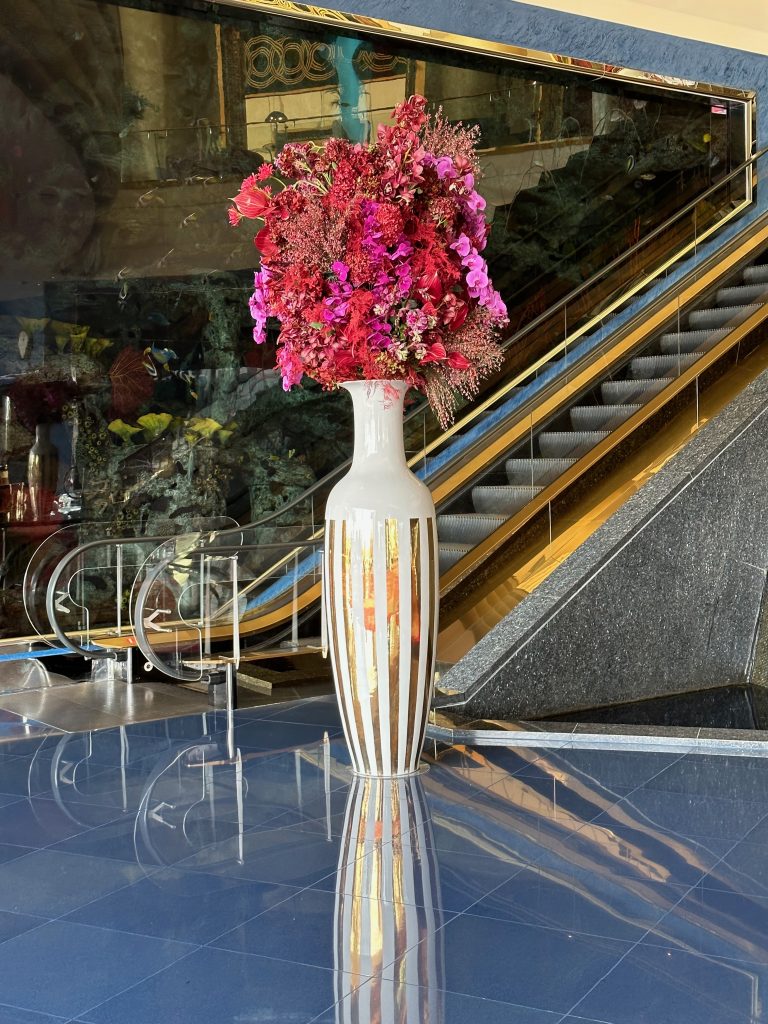
Anyone that’s visited the Burj Al Arab, or seen photographs, then I am sure you know there is an aquarium either side of the escalators, going up from reception. Not insignificant as they are both 250,000-litre aquariums with around 40 species of exotic fish. You can kinda see it in this photo but difficult with the reflections.
The aquarium has been extended through much of the Ristorante L’Olivo at Al Mahara, which is located just off reception. Holding 990,000-litres of water and hundreds of species of marine life, it’s impressive. These photographs are from within the restaurant.
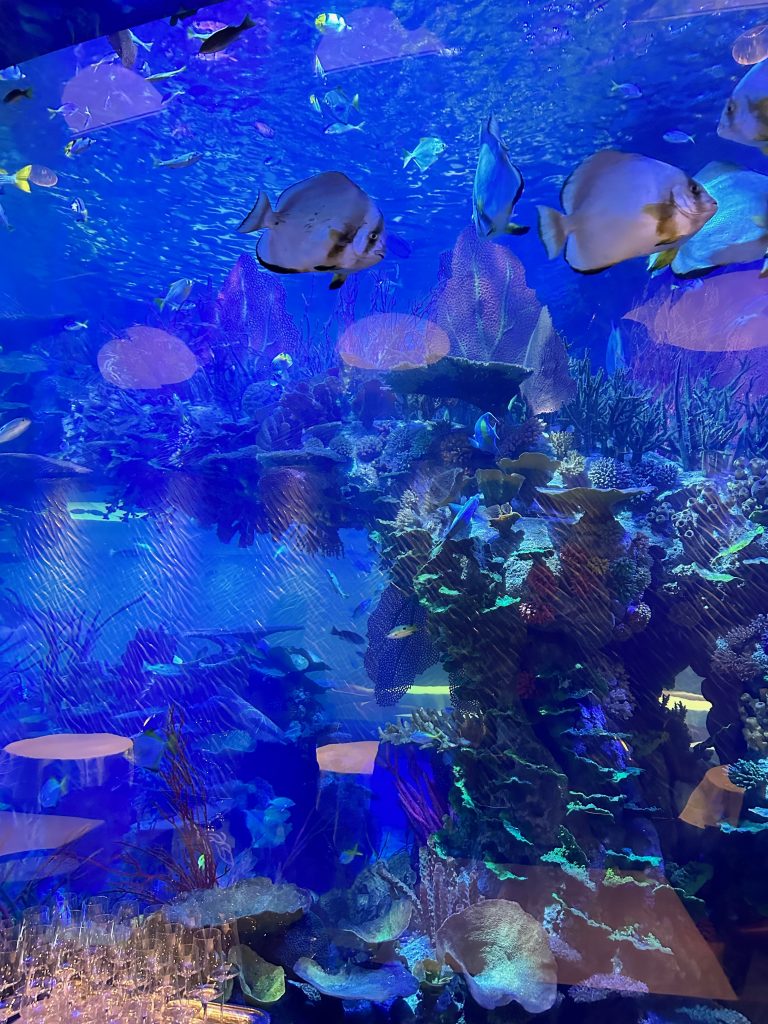
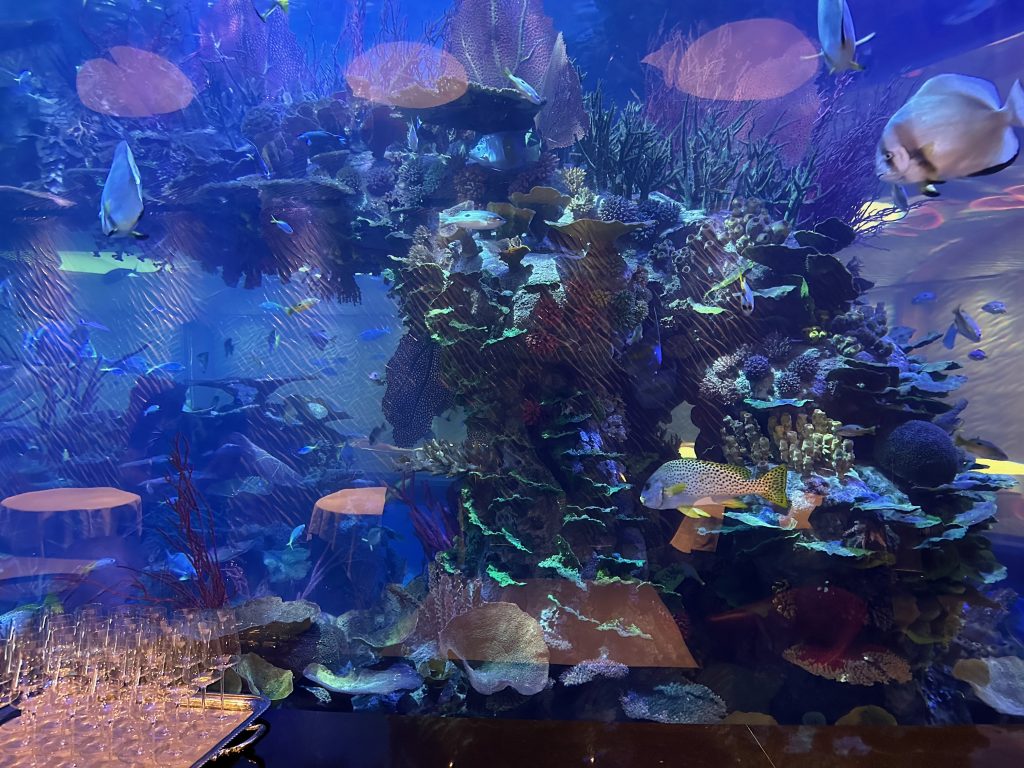
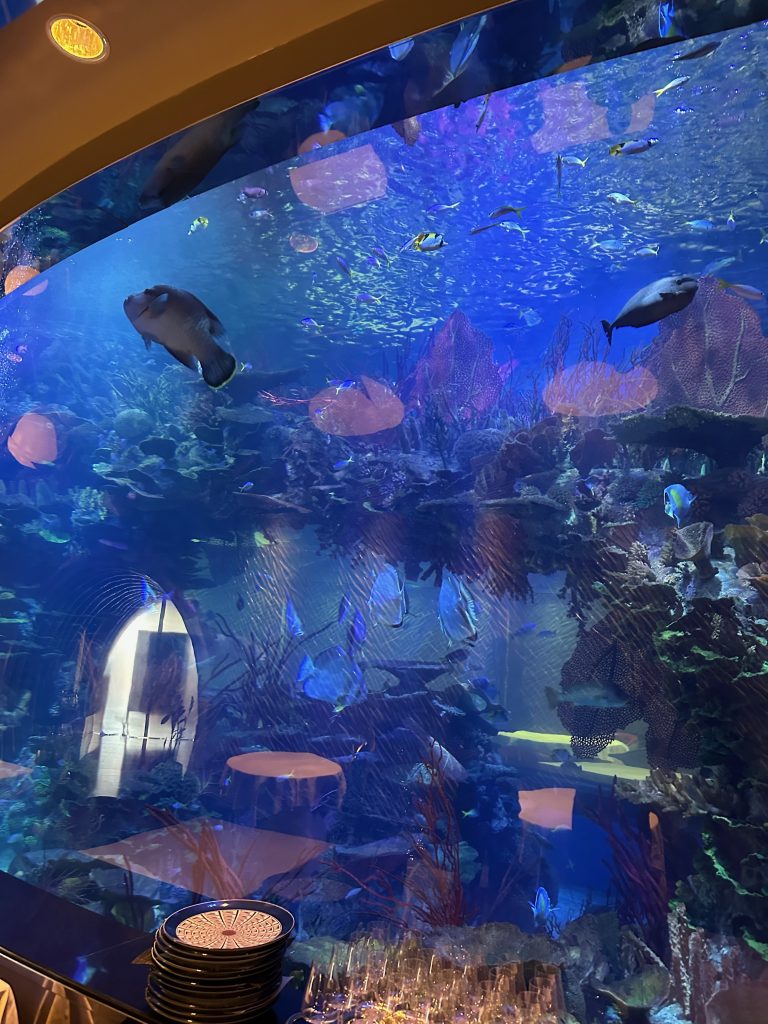
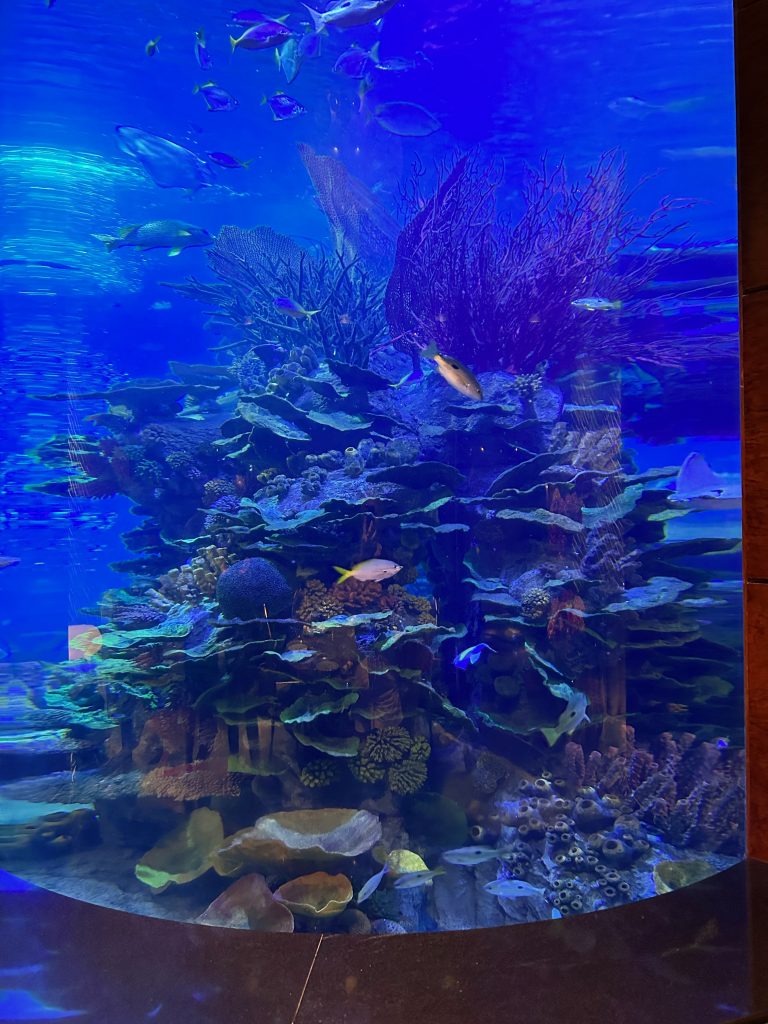
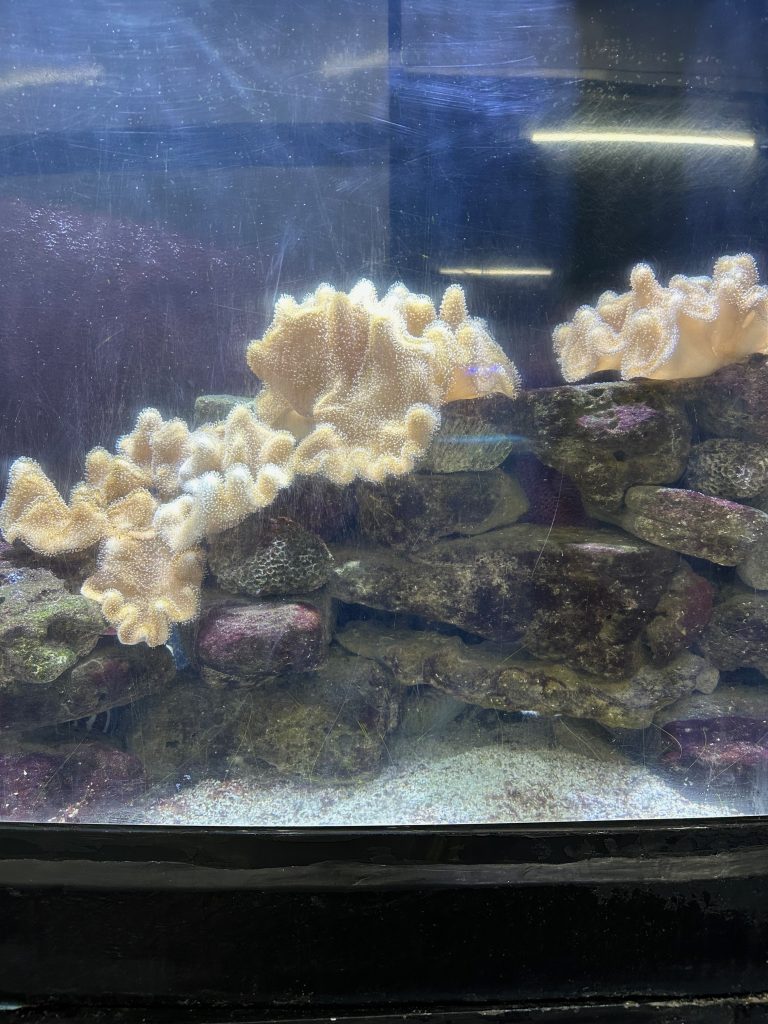
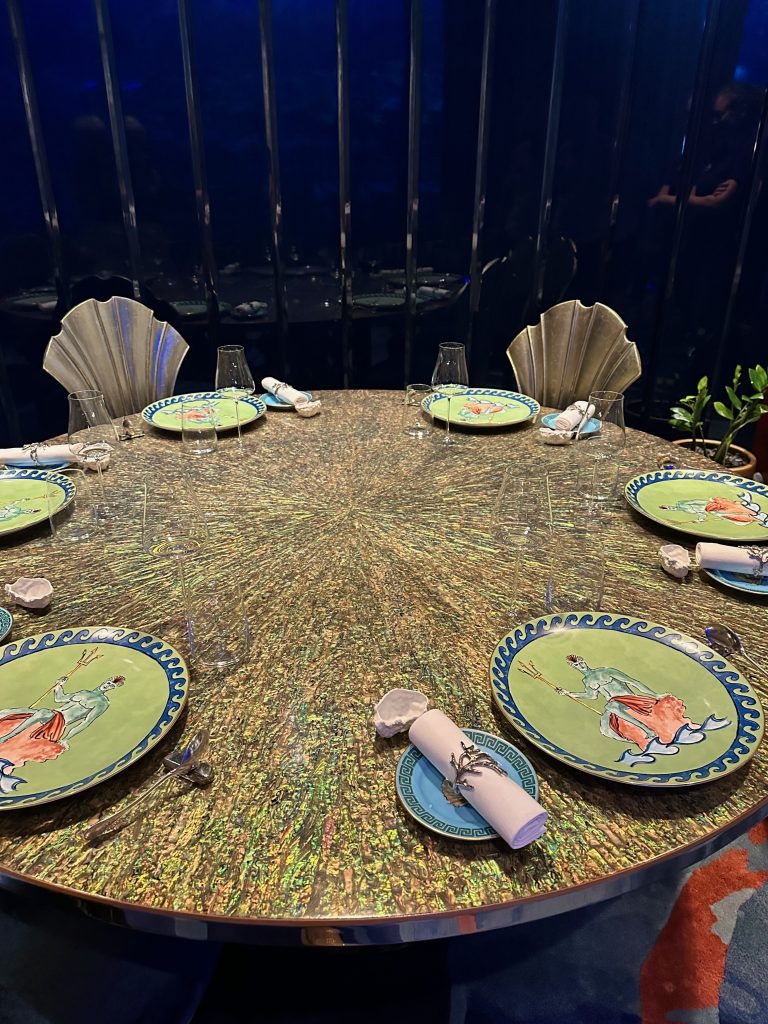
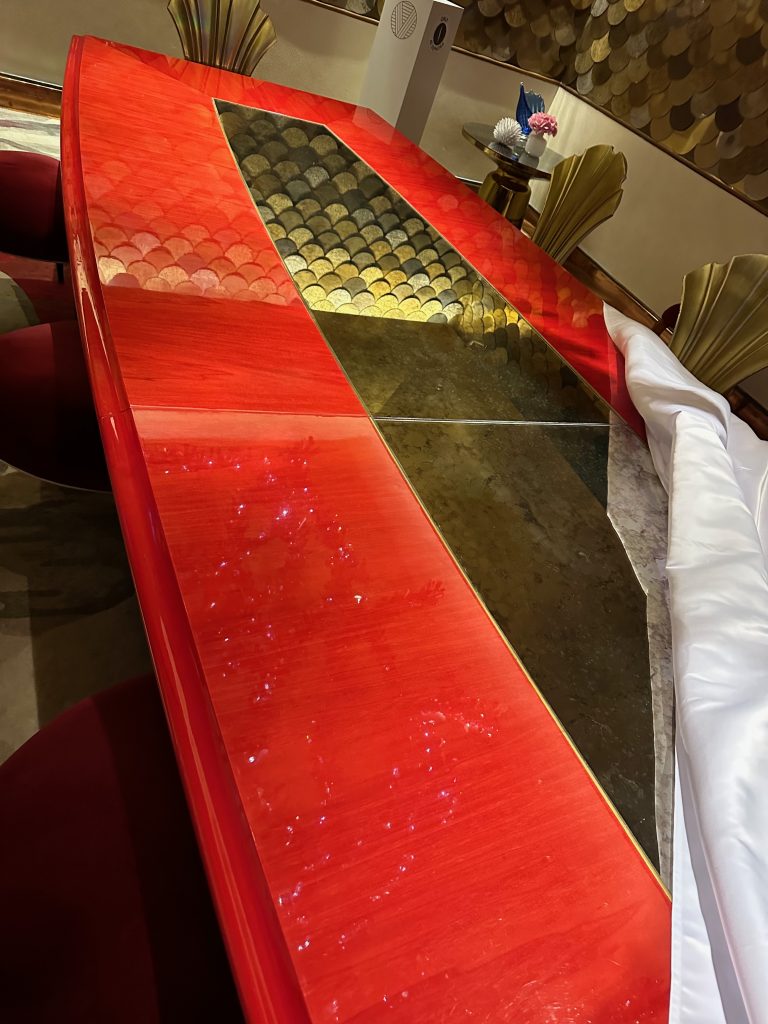
It’s a stunning environment to dine in. With beautiful tables and chairs plus a private dining room to die for. Would love to host a dinner there one day, look at this magnificent dining table – added to my bucket list.
But there is so much more to this aquarium. Once you go ‘back of house’ you start to get the measure of both that and the conservation programmes in place here, that unless you ask, you would likely never know about.
Turtle Rehabilitation
The Hawksbill turtle is native to the Middle East and currently classed at ‘critically endangered’. Well in fact ALL species of turtles across the world are listed as at least ‘endangered’.
Since 2004 the Jumeirah Hotels and Resorts group have worked collaboratively with the Dubai Wildlife Protection Office and a specialised team of veterinarians, Central Veterinary Research Laboratory to, very successfully, run the Dubai Turtle Rehabilitation Project.
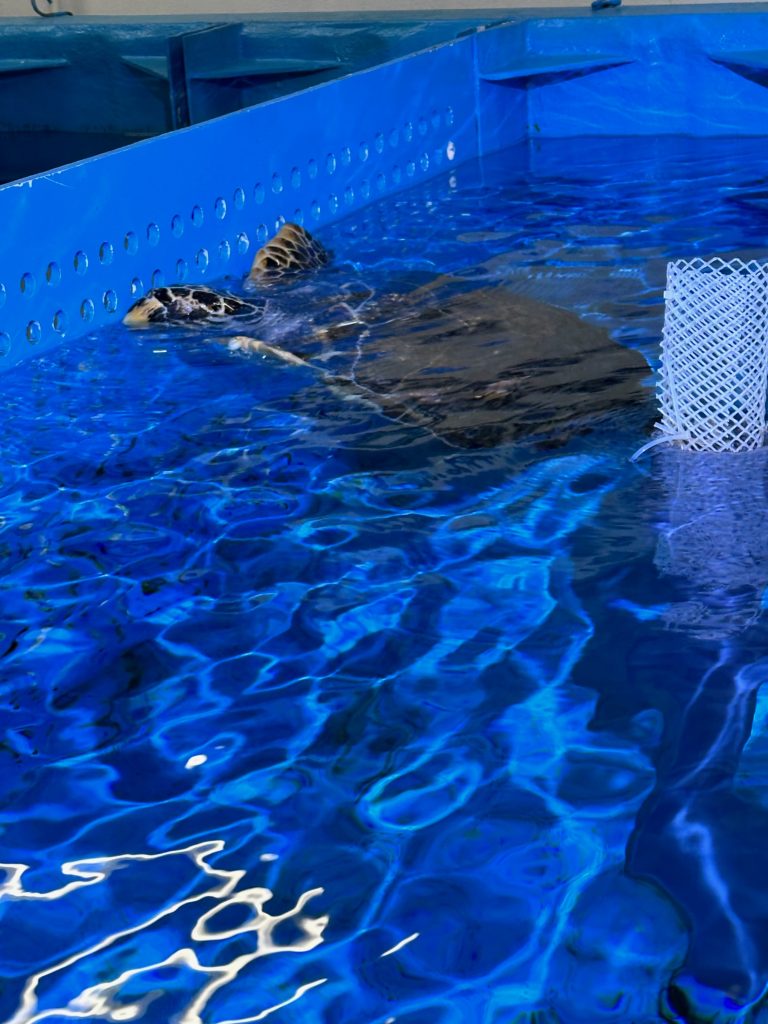
Any injured or sick turtles that are found by the public are brought to the Burj Al Arab Aquarium for initial assessment and then referred to the specialist veterinarians. Whether that’s an injury from entanglement in discarded fishing gear to natural causes such as abnormally heavy barnacle encrustation which can occur during the colder winter months. Once that primary care has been administered, they are then returned to the Aquarium where they can be monitored, ongoing treatment needed can be administered etc, until they reach the point where they are transferred to outside pens within the Madinat Jumeirah waterways or some of the larger pens that are in Mina Salem hotel.
The end goal is to restore the health of the turtles such that they can safely be released back into the sea. And they have certainly met that goal with over 2000 turtles rehabilitated and released to be where they should.
Many of the turtles have buoyancy issues. It’s believed if they get caught in fishing nets and are brought to the surface too quickly this may be a cause and of course they can be entangled in ‘ghost’ nets. Ghost nets is the term used for lost or discarded fishing nets in the ocean. Typically made of almost invisible material, they are hard to find and continue to catch marine life such as turtles, causing devastating effects on nature. Fishermen are encouraged not to throw turtles they accidentially catch, back into the sea but to bring them to the Aquarium to be treated. Experimenting with tanks that would normally be for treating divers for the bends, is also being somewhat successful as an aid to buoyancy issues. If a turtle can’t dive down for food then it won’t survive.

Support SueQsWorld Writing: It’s always optional but your Donation to SueQsWorld writing is more than just financial support; it’s an investment in creativity, diversity and the transformative power of words. Join me in my mission to enrich lives and inspire change. Every contribution, no matter the size, makes a difference. Click on the Donate button, top right hand side of the page for more information.
Clownfish
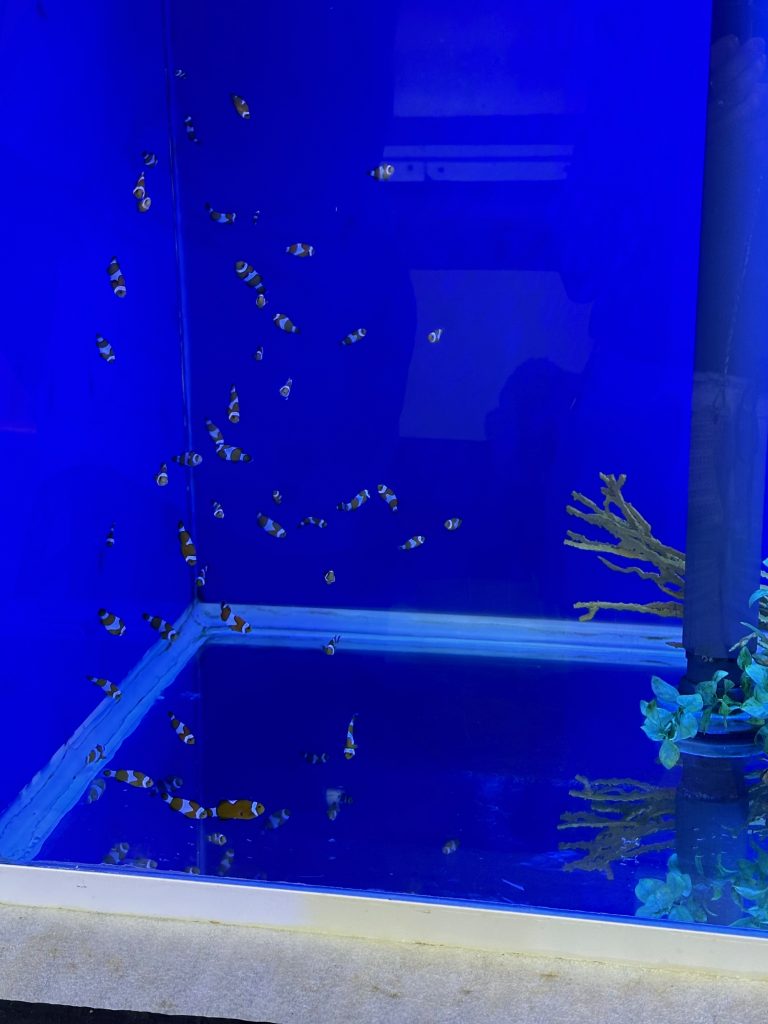
It’s not just turtle rescue and rehabilitation that takes place here. They have a very successful Clownfish breeding program. My understanding is that the film Finding Nemo increased the demand for Clownfish which led to widespread over harvesting of these brightly coloured fish. Now whether this is actually true or not is debatable.
Successful breeding of them in general though means there is less need to take them from the wild, fulfilling the needs of those who want to put these colourful fish in tanks. Now you can probably tell I am not in favour of this, they should be swimming in the sea. However, I also get that seeing these fish is a wonder for everyone and gives a chance for education about the importance of the sea. Seeing all the variety of fish in the Burj Al Arab Aquarium is phenomenal. Educating us about these beautiful creatures will encourage all of us to do more to protect our oceans and all the incredible creatures in it – hopefully!
What About Sustainability?
The Jumeirah group do much to recycle and be sustainable. However, it has very little obvious visibility at the Burj Al Arab – apart from the recycling bins in the suites. It’s always a balancing act with some of the clientele. I have heard this before in many five star hotels and resorts. How do you ask guests checking into the Burj Al Arab, and other very much ‘luxury playground type’ resorts, whether they would prefer not to have towels and sheets changed and washed every day? At the time they told me they are considering asking in pre-registration documentation, but it’s work in progress. This is where us as guests need to change!
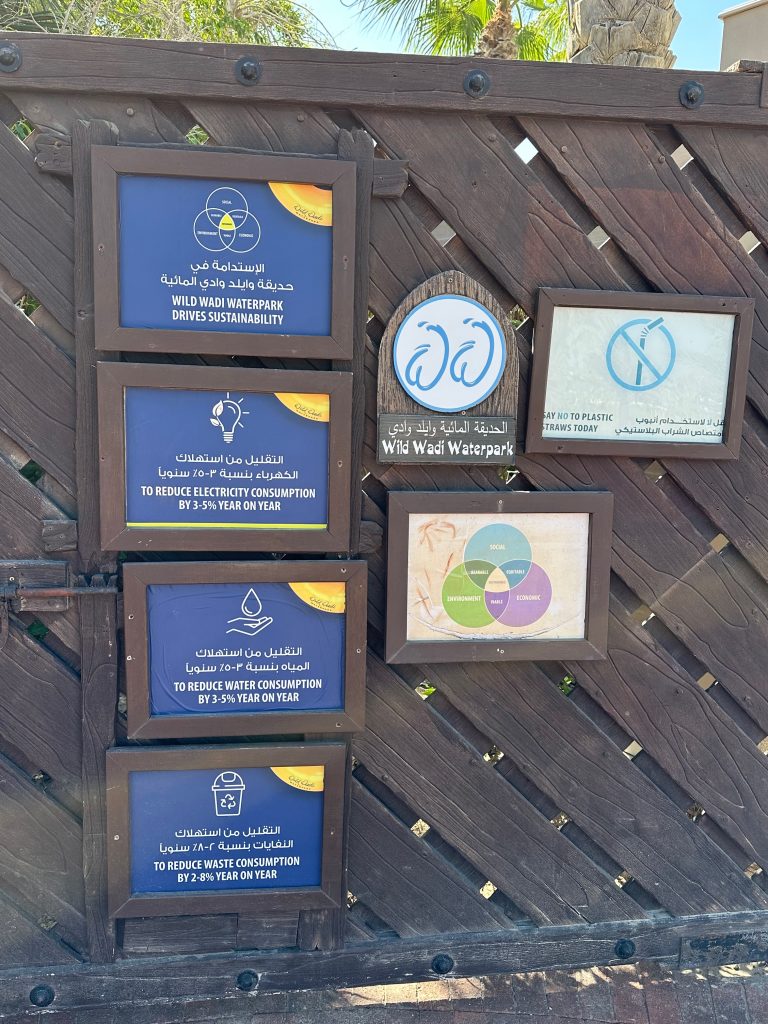
Every hotel in this group in Dubai has their own freshwater cleansing and bottling plants and they only use glass bottles for that however, the difficulty comes at the pools. They have been experimenting, supplying plastic reusable drinking bottles but people tend to take them with them and then they have a supply issue. They are trying to totally eliminate any plastic straws and also plastic bottles, with a recycling program working to eliminate plastics from the environment again across the group. Recycled food waste is processed into animal feed in Dubai. The other the other issue they have is they would like to be having some way of asking guests if they would prefer not to have towels and sheets changed and washed every day, but the challenge is because it’s a five star resort it’s a bounce off against asking those guests upfront what they want to do with laundry et cetera. They are thinking of asking in the pre-registration documentation, but they’re working on this one.
It is very much a luxury playground there but again they don’t make a big play on what they’re trying to scramble and do behind-the-scenes to be sustainable. Me being me, believes many guests, whomever they are, will not want the environment to suffer because of their holiday. Am I right ‘luxury seeking’ guests?
